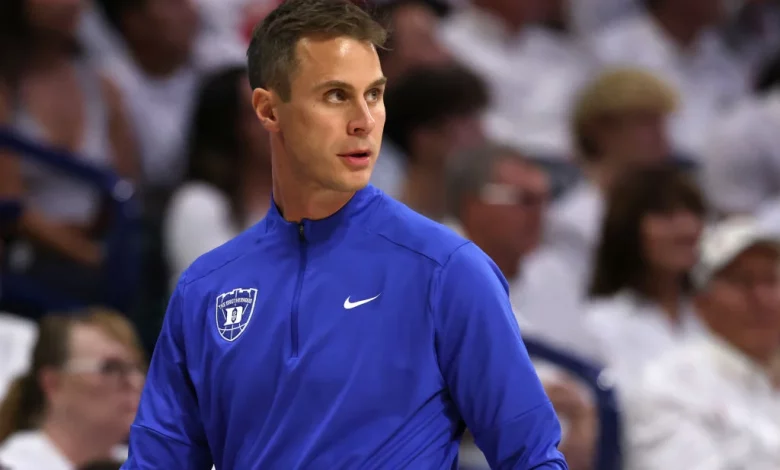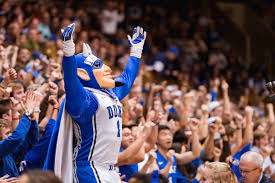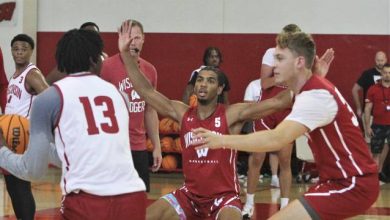What Cedric Coward staying in NBA Draft means for Jon Scheyer and Duke basketball in 2025-26.

The decision of Cedric Coward Jr. to remain in the 2025 NBA Draft has sent ripples through the college basketball landscape, especially for Duke University. As a transfer from Washington State, Coward’s commitment to the draft leaves Duke without a potentially vital piece of its roster for the upcoming 2025-26 season. This development places additional pressure on head coach Jon Scheyer and reshapes the dynamics of Duke basketball as the program prepares to face the challenges of the Atlantic Coast Conference (ACC) and the NCAA Tournament.
This article explores the implications of Coward’s decision on Jon Scheyer’s strategy, the team’s roster, and the broader outlook for Duke basketball’s 2025-26 season.
Cedric Coward’s Profile and Impact Potential
Cedric Coward Jr., a 6-foot-6 guard known for his scoring ability, athleticism, and versatility, originally played for Washington State before entering the transfer portal. During his time at Washington State, Coward showcased his potential as a high-impact player, averaging 17.7 points and 7 rebounds per game in the 2024-25 season. His skill set includes the ability to create his own shot, defend multiple positions, and contribute as a playmaker.
For Duke, Coward represented an immediate boost in talent and experience, especially given the team’s youth and transitional phase after losing several key players to graduation and early NBA entry. His scoring punch and versatility were expected to provide Coach Scheyer with a reliable option on both ends of the floor.
Impact on Duke’s Roster Composition
With Coward opting to stay in the NBA Draft, Duke’s roster composition for the 2025-26 season will look significantly different than anticipated. The Blue Devils now face a shortage of experienced wings and guards, which could lead to challenges in depth, leadership, and on-court versatility.
1. Loss of Veteran Experience
Coward’s departure leaves Duke lacking a seasoned presence in the backcourt. His experience as a proven scorer and defender would have helped stabilize the team during tough stretches, particularly in high-pressure ACC games and NCAA tournament play.
This absence places additional responsibility on younger players such as Caleb Foster, a promising guard with potential but limited college experience. Additionally, incoming freshmen like Cameron Boozer will be thrust into larger roles sooner than expected, potentially accelerating their development but also increasing risk related to inexperience.
2. Depth Challenges
Depth is critical for sustained success in college basketball, especially in a conference as competitive as the ACC. Losing Coward means Duke has fewer options for rotation, which could lead to increased fatigue and vulnerability to injuries.
Coach Scheyer will need to rely heavily on the development of younger players and possibly seek late transfers or graduate students to fill gaps. This might also push Scheyer to experiment with different lineups and defensive schemes to compensate for the lack of a reliable scoring wing.
Jon Scheyer’s Coaching Challenge
Jon Scheyer, now entering his fifth season as Duke’s head coach, faces a critical test. The Blue Devils’ tradition and high expectations mean that every roster change is scrutinized, and Coward’s decision adds a new wrinkle to Scheyer’s challenge.
1. Player Development Focus
Scheyer’s ability to develop young talent will be paramount. The coaching staff will likely place an increased emphasis on grooming freshmen and sophomores to step into significant roles. This process will require patience, clear communication, and a focus on fundamentals to minimize mistakes and build confidence.
Scheyer’s track record shows that he has been successful in developing players, but this season could test that skill more than any previous year.
2. Recruiting and Transfers
In response to Coward’s absence, Scheyer and his staff will likely be more aggressive in pursuing transfer portal candidates and late signees. Given the ever-evolving college basketball landscape, leveraging the transfer portal is often necessary to fill immediate needs.
Scheyer’s ability to attract players who fit Duke’s culture and system will be vital. The coaching staff will have to balance short-term fixes with long-term program goals.
Tactical Adjustments for 2025-26
Without Coward’s scoring and defensive versatility, Duke may need to adjust its tactical approach on both ends of the floor.
1. Offensive Strategy
Scheyer might focus more on ball movement and team-oriented scoring to compensate for the loss of Coward’s individual offensive threat. Emphasizing pick-and-roll plays, off-ball screens, and spacing could help create more balanced scoring opportunities.
Younger players like Foster and Boozer will need to improve their shot selection and decision-making to keep the offense fluid. Additionally, senior leadership from returning players will be critical in maintaining offensive cohesion.
2. Defensive Schemes
Defensively, Coward’s versatility would have allowed Duke to switch effectively on multiple positions and apply pressure on ball handlers. Without him, the Blue Devils may adopt a more zone-oriented defense or focus on team defense concepts to mask individual inexperience.
This adjustment could affect Duke’s overall defensive efficiency but may be necessary to compensate for the lack of veteran defenders.
Broader Implications for Duke Basketball
Coward’s decision extends beyond just the 2025-26 season, reflecting broader trends and challenges in college basketball today.
1. Managing Player Movement
The transfer portal and early NBA draft declarations have made roster stability more elusive for programs. Duke, traditionally a powerhouse attracting top recruits, now must be nimble and adaptive in managing roster turnover.
Coward’s choice underscores the importance of flexible roster management and the need to prepare for unexpected changes.
2. Maintaining Program Prestige
Despite these challenges, Duke’s brand and coaching excellence provide a strong foundation. Success on the court will depend on how effectively Scheyer navigates this period of transition while continuing to recruit elite talent.
Coward’s departure might open opportunities for other players to emerge, and for Duke to showcase its resilience and depth in a highly competitive landscape.
Cedric Coward’s decision to stay in the NBA Draft undeniably complicates Duke basketball’s outlook for the 2025-26 season. The Blue Devils will miss his scoring, defense, and experience, which could impact depth, leadership, and tactical flexibility.
For Jon Scheyer, this development represents both a challenge and an opportunity. His ability to develop young talent, adjust strategies, and manage roster dynamics will be crucial in maintaining Duke’s competitiveness.
As college basketball continues to evolve, Duke’s response to Coward’s departure will serve as a case study in resilience, adaptability, and the pursuit of sustained excellence.









